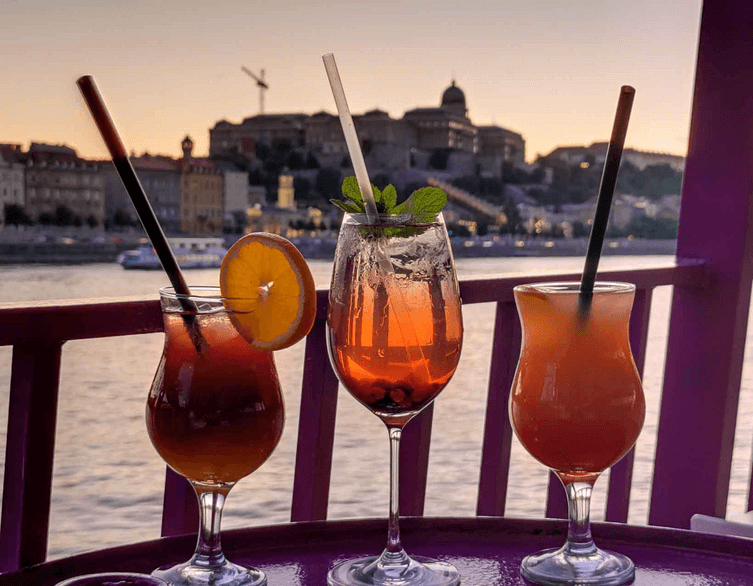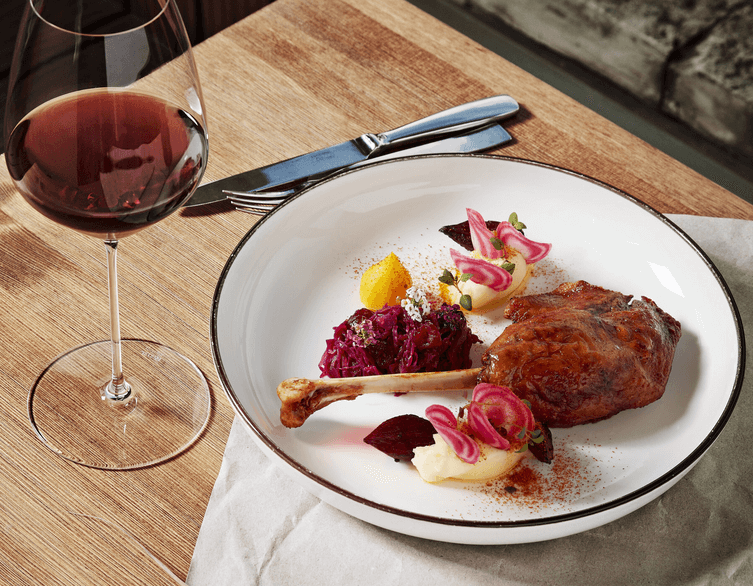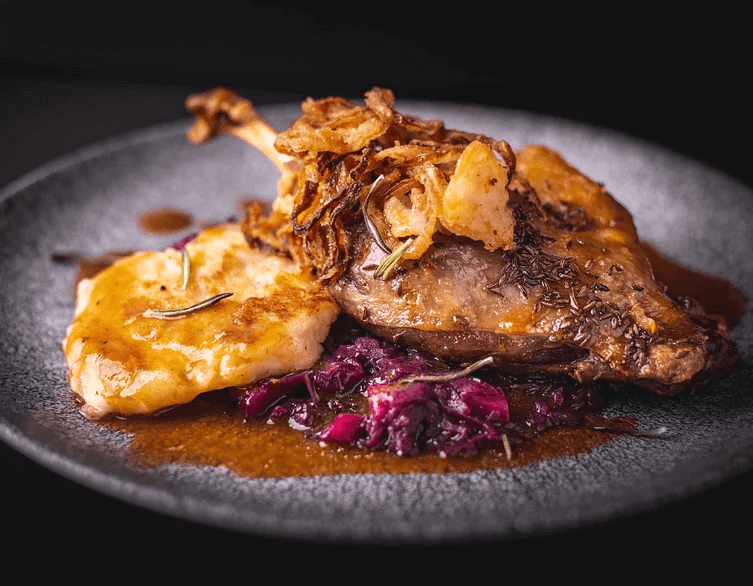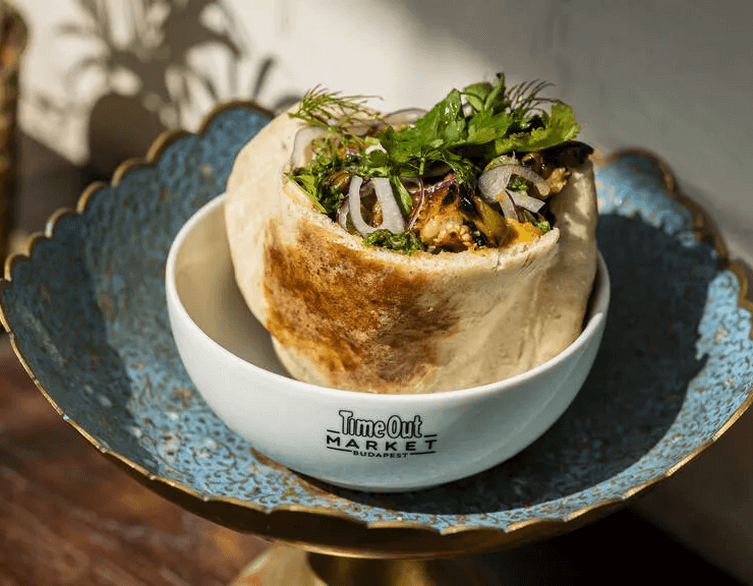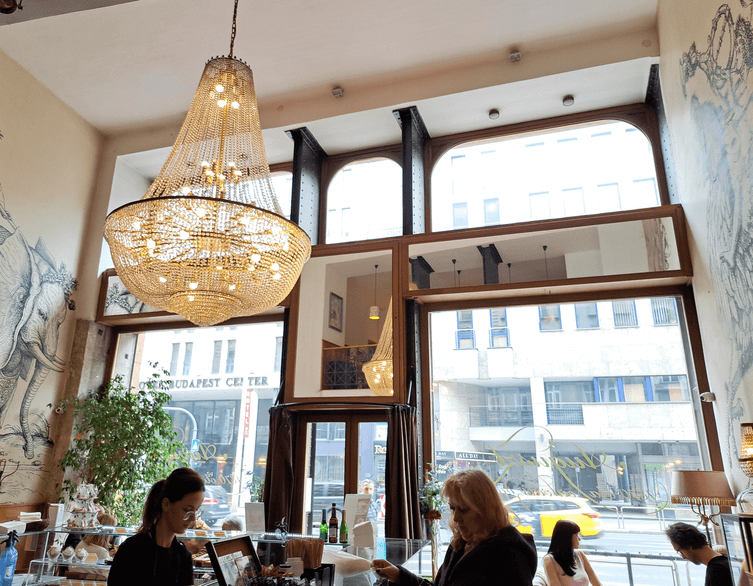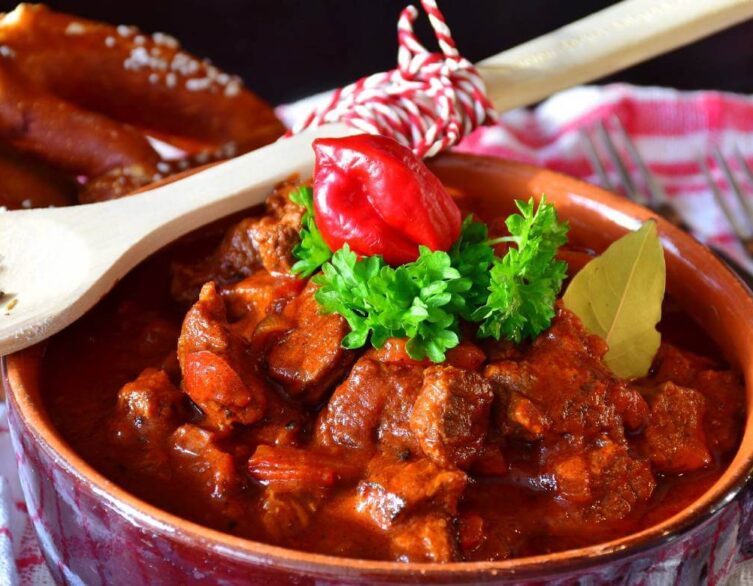Budapest Crowned Europe’s Most Authentic Food Destination: Why the Hungarian Capital Beat Rome, Paris, and Barcelona
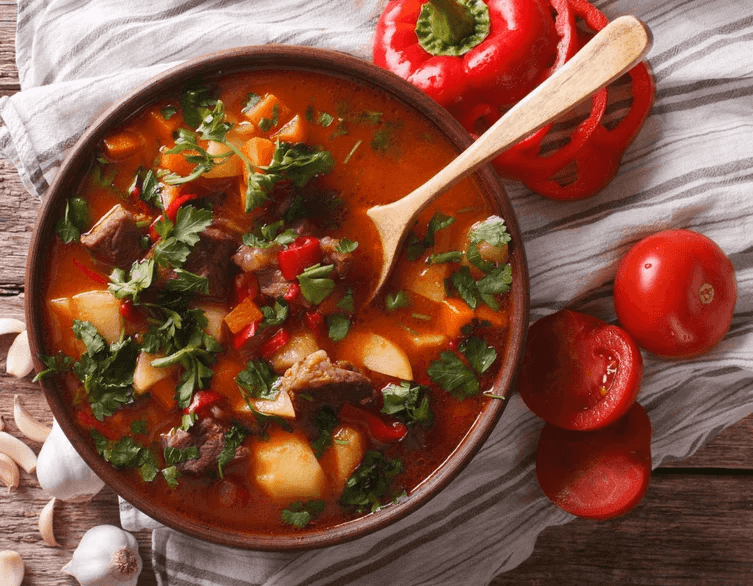
When travelers dream of Europe’s finest culinary destinations, their minds typically wander to Italy’s pasta perfection, France’s refined bistros, or Spain’s vibrant tapas culture. These nations have spent centuries building unshakeable reputations as the continent’s gastronomic heavyweights. But a groundbreaking new study has turned conventional wisdom on its head, crowning an unexpected champion: Budapest, Hungary’s magnificent capital, has officially been named Europe’s most authentic food destination.
This isn’t just another travel accolade gathering dust on a shelf. This recognition represents a seismic shift in how the culinary world views Central European cuisine and signals that Budapest has definitively arrived on the global gastronomic stage. For travelers seeking genuine food experiences untainted by tourist traps and manufactured authenticity, the Hungarian capital now stands as the continent’s undisputed leader.
The Research That Changed Everything
The prestigious recognition comes from Saga, an established travel company that conducted an exhaustive analysis of European dining. This wasn’t a subjective judgment call by a handful of food critics. Saga’s researchers examined 125 European cities and analyzed reviews from over 5,000 restaurants, specifically mining Google review data for how frequently diners used words like “authentic” and “traditional” when describing their meals. They then combined this frequency data with sentiment scores to measure not just how often these terms appeared, but how positively reviewers felt about their experiences.
Budapest emerged victorious with an impressive score of 98 out of 100, leaving traditional culinary powerhouses scrambling in its wake. This methodology matters because it reflects real traveler experiences rather than paid promotions or sponsored content. When thousands of visitors take time after a long day of sightseeing to write that their meal was “the most authentic experience,” that carries far more weight than any glossy magazine feature. The study revealed that while Budapest has long been celebrated for its ruin bars and thermal baths, its gastronomy has quietly overtaken these attractions as the city’s crowning glory.
Beyond Goulash: Understanding Budapest’s Culinary Revolution
Budapest’s gastronomic ascent didn’t materialize overnight. It represents years of deliberate cultivation that has finally reached maturity. Michelin-starred restaurants have opened across the city, elevating Hungarian culinary artistry to international standards, but the secret to Budapest’s success extends far beyond fine dining. The city’s greatest strength lies in its duality—the seamless coexistence of world-class haute cuisine with traditional, checkered-tablecloth neighborhood eateries where grandmothers’ recipes still reign supreme.
The recent opening of the Time Out Market, the first location in Central Europe, reinforces this trend by showcasing the best local chefs and flavors under one roof. Yet the Saga study found Budapest exceptional precisely because the city doesn’t pretend to be something it isn’t. Authenticity here isn’t a staged performance in a cultural theme park—it’s the lived reality of everyday life. Travelers appreciate receiving the same quality and flavors that locals seek out. Tourist traps are increasingly rare, replaced by establishments that proudly embrace their roots, whether serving simple lángos or sophisticated multi-course tasting menus.
This commitment to honesty and quality distinguishes Budapest from other European capitals where authenticity often gets sacrificed at the altar of mass tourism. The Hungarian capital has managed something remarkable: growing its tourism sector while maintaining its culinary soul intact.
Decoding Authentic Hungarian Flavors
What exactly makes a dining experience “authentic” in Budapest? The city’s culinary identity centers on iconic dishes that visitors consistently praise. Goulash, or gulyás as locals call it, stands as Hungary’s most famous export—a rich, paprika-laden beef stew that warms the soul. Chicken paprikash, or csirkepaprikás, offers a creamy, comfort-food embrace with its distinctive paprika-infused sauce and dollop of sour cream. For dessert, the legendary Gundel pancake delivers decadence with its walnut and rum-soaked raisin filling, all smothered in chocolate sauce.
The study specifically highlights Rosenstein Restaurant as a fortress of classic, family-recipe preservation. Rosenstein represents more than just a restaurant—it’s an institution where authentic experience extends beyond the plate’s edge. This family-run establishment embodies generations of accumulated knowledge and genuine hospitality. When travelers dine here, they receive more than food; they gain a story and a piece of shared Hungarian and Jewish culinary heritage. This depth and respect for tradition creates what visitors call “authentic,” making them feel they’ve participated in a genuine cultural exchange rather than merely consuming a meal.
But authenticity in modern Budapest transcends museum-piece preservation. The study wisely recognizes this by highlighting Borkonyha alongside Rosenstein. Borkonyha champions modern, creative Hungarian cuisine, proving that innovation and tradition aren’t adversaries but allies. The restaurant’s chefs approach Hungarian ingredients and flavors with international sophistication, creating exciting dishes that remain unmistakably Hungarian in character.
The fact that travelers describe this contemporary interpretation as equally “authentic” demonstrates Hungarian gastronomy’s capacity for evolution without losing its essence. Budapest’s success formula lies in this perfect balance: the city simultaneously offers grandmother’s cooking warmth at Rosenstein and twenty-first-century culinary curiosity at Borkonyha.
The Street Food Revolution
Budapest’s authentic food scene extends well beyond restaurant dining rooms into its thriving street food culture. Lángos, a deep-fried flatbread typically topped with sour cream, garlic, and cheese, represents Hungarian comfort food at its finest. You’ll find vendors selling these golden, crispy creations throughout the city, from the Great Market Hall to festival stalls. The experience of biting into a fresh lángos, still hot from the fryer, captures Budapest’s culinary spirit—unpretentious, satisfying, and deeply connected to local tradition.
For those with sweeter inclinations, kürtőskalács, or chimney cakes, provide another street food staple. These cylindrical, sugar-coated pastries feature crispy exteriors and soft, warm interiors, often enhanced with cinnamon, walnut, or coconut toppings. Watching these treats rotate over open flames while their sugar caramelizes offers as much entertainment as eating them provides satisfaction. This accessible, visible food preparation embodies the transparency and genuineness that travelers value when seeking authentic experiences.
Best deals of Budapest
What Makes Food “Authentic” According to Travelers
The Saga research reveals several factors that contribute to perceived authenticity. Travelers seek genuine flavors—the goulash that locals actually eat rather than watered-down tourist versions. Traditional recipes matter, with dishes like chicken paprikash prepared according to generations-refined formulas that carry visible heritage. Quality local ingredients prove essential; authentic taste comes from proper Hungarian paprika, real sour cream, and quality meat, not imported substitutes.
Atmosphere and storytelling enhance the dining experience beyond the food itself. Whether in a family restaurant or modern bistro, the environment, service style, and narrative behind the dish all contribute to authenticity. Interestingly, innovative respect also counts—modern Hungarian cuisine like that at Borkonyha qualifies as authentic because it understands and honors its roots while building something new upon that foundation.
The Old Guard Left Behind
Budapest’s victory gains weight when considering who finished behind it. Second place went to another surprise destination: Piraeus, Greece, which stepped from Athens’ shadow thanks to its seafood-focused establishments. More significantly, Budapest surpassed all the traditional “heavy hitters”—cities throughout Italy, France, and Spain all landed behind the Hungarian capital.
This result sends a clear message: Budapest gastronomy no longer represents an up-and-coming challenger but the reigning champion. The Hungarian capital’s secret ingredient—something mass-tourism-weary European cities can only envy—is genuine, effortless authenticity. While authentic experiences require searching in many destinations, they appear on virtually every Budapest street corner.
Planning Your Authentic Budapest Food Journey
For travelers ready to experience Europe’s most authentic food destination, Budapest offers remarkable accessibility and value. The city’s dining scene spans all price points, from affordable street vendors to Michelin-starred splendor. Unlike many Western European capitals, Budapest provides excellent quality-to-cost ratios, meaning your food budget stretches further without sacrificing experience quality.
Start mornings at the Great Market Hall, where locals shop for paprika, sausages, and fresh produce. Sample lángos from ground-floor vendors before exploring upper-level craft stalls. For lunch, seek out neighborhood eateries in residential districts like District VIII or IX, where family-run establishments serve daily specials to office workers and regulars. These spots rarely appear in guidebooks but offer the most genuine local dining experiences.
Reserve evenings for exploring Budapest’s restaurant scene diversity. Perhaps begin with traditional Hungarian fare at a classic establishment, then on subsequent nights venture into the creative contemporary cuisine that’s earning international acclaim. The city’s compact size and excellent public transportation make restaurant-hopping feasible even during short visits.
Don’t overlook Budapest’s café culture either. Traditional coffeehouses like Café Gerbeaud or the New York Café offer glimpses into the city’s imperial past, serving exquisite pastries in surroundings dripping with Belle Époque grandeur. These aren’t tourist traps but genuine institutions where locals still celebrate special occasions.
The Bigger Picture: Central European Cuisine’s Moment
Budapest’s recognition represents something larger than one city’s success—it signals growing appreciation for Central European cuisine generally. For too long, this region’s culinary contributions were overshadowed by their Western and Southern European neighbors. The Saga study helps correct this historical oversight, acknowledging that countries like Hungary, Poland, and the Czech Republic possess equally rich, sophisticated food traditions worthy of international attention.
This shift benefits travelers seeking fresh experiences beyond overtouristed Italian piazzas and Parisian boulevards. Central Europe offers outstanding food quality, fascinating history, stunning architecture, and significantly lower prices—all while avoiding the overwhelming crowds plaguing more traditional destinations. Budapest leads this regional renaissance, but its success illuminates the broader area’s culinary wealth.
Why This Matters for Your Next European Adventure
If you’re planning European travel and food ranks among your priorities, this research should fundamentally reshape your itinerary. Budapest offers something increasingly rare: authentic cultural experiences that haven’t been diluted or manufactured for tourist consumption. The city’s food scene remains rooted in genuine tradition while embracing innovation, providing depth and variety that rewards multiple visits.
Moreover, Budapest’s recognition as Europe’s most authentic food destination means you’ll enjoy outstanding meals while avoiding the premium prices attached to traditional culinary capitals. Your dining budget accomplishes more here, allowing you to sample widely across price points and styles without financial stress. You can afford to take risks, try unfamiliar dishes, and eat adventurously—exactly the approach that yields the most memorable food experiences.
The Hungarian capital’s secret has finally been revealed to the world. Travelers are discovering what locals have known for generations: Budapest ranks among Europe’s richest and most exciting cities historically, culturally, and culinarily. This recognition doesn’t represent a peak but rather the first step into a new era where Budapest’s name becomes synonymous with uncompromising, authentic gastronomic experience. The question isn’t whether to visit Budapest—it’s how soon you can book your ticket to taste Europe’s most authentic flavors for yourself.
Related news
















